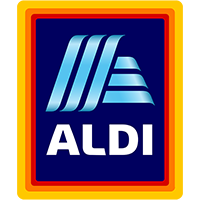1. Executive summary
Agentic AI systems only generate value when they integrate with the systems, workflows, and data your business already relies on.
That’s why integration and deployment aren’t afterthoughts — they are core to successful AI implementation.
WNPL helps businesses deploy agentic AI that works across your tools, platforms, and teams, with the right data pipelines, APIs, security, and monitoring. From semantic kernel to CRM to internal ERPs, we make your agents part of your actual environment — not a side experiment.
Outcomes:
- Seamless operation across legacy and modern systems
- Secure, scalable agent deployment with role-aware access
- Real-time data syncing and agent memory
- Faster time-to-value and lower integration friction
2. What this page covers
On this page:
- Why integration is essential to real AI value
- What systems and platforms we connect with
- WNPL’s services in integration and deployment
- Use cases showing integrated agents in action
- Our technology stack and deployment approach
- How to engage us
Target audience:
- CTOs, CIOs, and platform architects
- Heads of automation or transformation
- Product owners or technical decision-makers
3. WNPL service scope
Integration is not just “wiring things up.” It’s about designing the right data pathways, trust layers, and runtime environments so that your AI agents are useful, safe, and sustainable.
Our core services:
- Semantic Kernel agent development
- API-integrated AI tools
- Orchestration of AI workflows
- Enterprise AI agent deployment
- AI integrations with ERP / CRM / HRIS systems
✅ Quick Tip: If you already have APIs, forms, or data sources — you are more ready for integration than you think. Let the AI agent use what you already have.
4. Why integration is essential
Agentic AI isn’t just “code that runs.” It needs to:
- Access the right data (securely and on-demand)
- Perform tasks via tools (APIs, SaaS apps, scripts)
- Log, observe, and refine actions in live workflows
- Work in concert with humans and systems already in place
Integration makes the AI agent not just useful — but trustworthy and auditable.
Real World Example
A financial services team needed agents to extract and classify key data from internal documents. Instead of building a new tool, the agents were connected directly to their existing document store, CRM, and approval chain — so that agents could act like team members, not just bots. The result: a 72% faster processing time and zero new platforms to train on.
5. What we integrate with
WNPL’s agent systems have been integrated with:
- Internal databases (SQL, Mongo, NoSQL)
- CRMs (Salesforce, HubSpot, Zoho)
- ERPs (SAP, Oracle, Dynamics)
- HR tools (BambooHR, Workday, Greenhouse)
- Document management systems
- Custom-built APIs and internal middleware
- Slack, MS Teams, and email-based triggers
- Vector DBs (Pinecone, FAISS, Weaviate) for agent memory
⚠️ Watch Out: Not all APIs are AI-ready. We help you design fallback, retry, and validation strategies so agents behave predictably in the real world.
6. Use cases and supported platforms
WNPL builds and deploys AI agents that integrate seamlessly into your existing digital infrastructure — not just as add-ons, but as embedded participants in your day-to-day operations. Whether you run on legacy tools, modern SaaS, or hybrid enterprise stacks, our integration-first approach ensures your agents actually work — across data, actions, and approvals.
|
Use Case
|
Integration Target(s)
|
|
Auto-generate & email onboarding kits for new hires
|
BambooHR, Outlook, Google Workspace
|
|
Classify & escalate compliance risks from shared docs
|
SharePoint, OneDrive, Slack
|
|
Summarise CRM tickets and suggest actions
|
Salesforce, HubSpot, Zendesk
|
|
Auto-fill payroll adjustments based on time tracking
|
Workday, ADP, Timesheet APIs
|
|
Reconcile supplier invoices and flag anomalies
|
NetSuite, SAP, Oracle ERP
|
|
Auto-assign service tickets to available technicians
|
ServiceNow, Zoho Desk, custom job allocators
|
|
Notify managers when policy violations are detected
|
Teams, Slack, SMS API, internal policy checker
|
|
Extract metadata from uploaded contracts and tag them
|
Google Drive, DocuSign, Azure Blob Storage
|
|
Generate shift plans based on staff availability
|
Deputy, Kronos, internal roster DB
|
|
Update multiple systems when a client status changes
|
CRM ↔ Billing ↔ Project Management tools
|
|
Alert customer on service disruption and action taken
|
Email API, SMS, client portal frontend
|
|
Summarise legal docs and route to appropriate reviewer
|
DocuSign, MS Word docs, Notion, CRM
|
|
Process e-commerce returns with minimal input
|
Shopify, custom inventory tools, ERP
|
|
Monitor Slack channels and trigger internal workflows
|
Slack API, internal systems via webhook
|
|
Route incoming forms to different departments
|
Web form endpoints → Google Sheets → Notion or Slack
|
|
Classify and triage inbound emails with attachments
|
Microsoft Outlook, Gmail, cloud storage linkers
|
💡 Good to Know: We don’t force your teams to learn a new platform — we embed agents into what they already use. It’s intelligent automation, right where the work is happening.
7. Common client challenges
Integrating AI agents into real business systems isn’t just a technical exercise — it’s an operational shift.
WNPL helps organisations overcome the practical roadblocks of deploying intelligent agents at scale: from data access and API design to user trust and ongoing performance. We turn AI prototypes into dependable systems that run alongside your people and platforms.
|
Challenge
|
How WNPL Helps
|
|
“We don’t know how to connect the agent to our systems.”
|
We map out your existing platforms and define a secure, scalable integration layer.
|
|
“Our APIs aren’t AI-ready.”
|
We design middleware and fallback logic so agents can consume your data safely.
|
|
“We can’t risk agents breaking production.”
|
We build in staging, rollback, human-in-the-loop, and approval flows to reduce risk.
|
|
“We don’t have internal dev capacity.”
|
WNPL handles end-to-end agent deployment, including system access, testing, and rollout.
|
|
“Our data isn’t centralised or clean.”
|
We architect pipelines that allow agents to pull usable context from fragmented sources.
|
|
“We want the agent to work with our CRM/ERP/HR tools.”
|
We build agents that interact with APIs from Salesforce, SAP, Workday, and more.
|
|
“We need to know what the agent is doing at all times.”
|
Logging, observability, and agent dashboards are part of every deployment.
|
|
“Our security team is concerned about LLM-based agents.”
|
We implement guardrails, prompt validation, audit logging, and PII shielding.
|
|
“We need multi-environment deployment.”
|
We deploy agents to local, cloud, and hybrid environments using secure containers.
|
|
“How do we test if this will actually work?”
|
We conduct sandboxed pilots and usage-based performance testing before go-live.
|
|
“What if the agent needs to evolve after go-live?”
|
Post-deployment support includes agent updates, prompt tuning, and expansion planning.
|
|
“How do we know this will scale?”
|
We test and model for growth, performance bottlenecks, and failover scenarios.
|
📌 Remember This: Agent deployment isn’t the end of the project — it’s the beginning of real-world value. WNPL ensures your agents don’t just run — they run right.
8. Our integration and deployment process
Here’s how we take an agent from idea to working inside your stack:
- Discovery & System Mapping
Identify systems, tools, data formats, security needs.
- Design Integration Layer
Define API access, failover logic, event triggers, agent roles.
- Secure Agent Deployment
Containerised, API-authenticated, and access-controlled agent systems.
- Testing & Monitoring
Sandbox test, logging setup, load testing, failover proofing.
- Go-Live & Refinement
Roll out with support, usage feedback, and refinement loop.
Technologies used:
- LangChain, Semantic Kernel, custom orchestration layers
- OpenAI, Azure AI, Anthropic
- RESTful APIs, GraphQL, webhooks
- Secure containers (Docker, ECS, Lambda)
- Monitoring via Prometheus, CloudWatch, ELK stack
9. What’s next?
If you’re ready to bring intelligent automation into the systems you already trust, integration is where it gets real.
📌 WNPL helps you skip the “proof of concept” limbo and go straight to working in production — with the tools, data, and teams you already have.
👉 Request a scoping call to review your integration architecture and see how AI agents can plug in.










